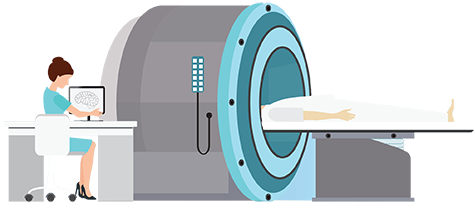

Imaging is important in helping diagnose illness or injury in patients, and radiologic technologists assist doctors by providing these images through the use of X-rays, ultrasounds, magnetic resonance imaging and other procedures. A postsecondary educational program can teach students the skills needed to pursue a career in radiology, which, according to the Bureau of Labor Statistics (BLS), is a health care career that has been in relatively high demand in recent years. Specific jobs in the field of radiology include:
Radiologic technology schools in New York offer a variety of certificates and degrees to prospective students seeking education in the field. Below is a list of just some of the schools in New York that offer radiology programs, according to the National Center for Education Statistics:
According to the BLS, an associate degree is typically the entry-level education that’s needed to pursue work in this field, though different radiology jobs or employers might require another level of education, such as a bachelor’s degree. Most levels of education will combine coursework with hands-on clinical experience, which may cover skills such as basic competency in radiographic procedures and the ability to be adaptive in non-routine scenarios. Some topics that students enrolled in radiologic technology schools in New York might study include:
Accreditation by the Joint Review Committee on Education in Radiologic Technology (JRCERT) is important, as graduation from an accredited program is often a requirement in many state-licensing processes. In New York, state licensure is needed for employment as a radiologic technologist, according to the American Society of Radiologic Technologists (ASRT). Passing a state exam or the national exam administered by the American Registry of Radiologic Technologists (ARRT) is acceptable for its licensing process.
Upon licensing, continuing education becomes important and, in New York, includes 48 mandatory hours that must be completed over the next four years. Different states have different licensing requirements, and some even offer license reciprocity, so it may be helpful to take the national exam offered by the ARRT; the ARRT reports that its exam is accepted in 37 states for licensing. However, the New York Department of Health indicates that New York does not offer license reciprocity, meaning that all radiologic technologists need to complete the licensing process in New York if they intend to work within the state.
Check out the table below to see the average annual salaries for different radiology professionals in New York, as well as the number of people employed in each job, according to data from the BLS. Keep in mind that salaries may vary based on your employer and location.
| Career | Total Employment | Annual Mean Wage |
|---|---|---|
| Cardiovascular Technologists and Technicians | 3,260 | 60,670 |
| Diagnostic Medical Sonographers | 4,790 | 74,480 |
| Magnetic Resonance Imaging Technologists | 2,140 | 78,930 |
| Nuclear Medicine Technologists | 1,150 | 84,540 |
| Radiologic Technologists | 12,320 | 68,720 |